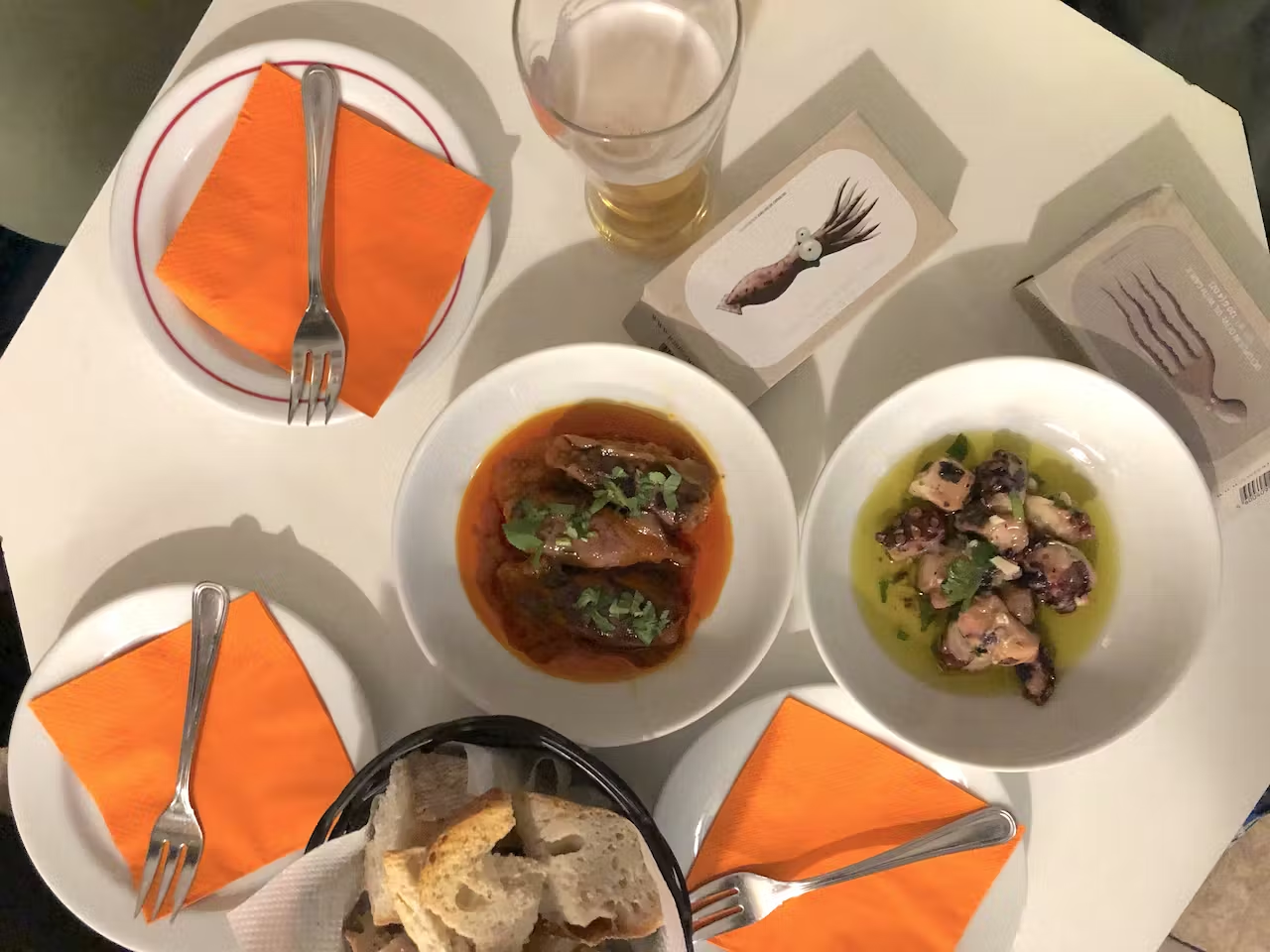On the Culinary Trail: Rediscovering Lisbon’s Tasca Culture with S.A.L.T. Lab Radio
I miss the prego. The prego is the beloved steak sandwich of Portugal, a country that knows its way around a sandwich. Prego means nail, which refers, I believe, to the way garlic is pounded into the meat before it’s quickly grilled or fried. Two things to consider about the prego are that it’s served on a big cushiony bun that is somehow crackly crisp at its edges and simultaneously light as a small cottony cloud, and that in Lisbon, where I picked up my prego habit, they’re often eaten as a kind of garlicky, buttery, beefy dessert after a lengthy meal of seafood.
Another thing to know is that they’re addictively delicious and once you start ordering them it’s hard to stop. While we were in Lisbon recently to record an episode of our podcast S.A.L.T. Lab Radio we had a kind of professional obligation to eat as many times as possible at a place called Cacué. The restaurant, run by the young chef José Saudade e Silva, who everyone calls Zé, falls into the category of a local bistro variant, or a tasca. For the podcast, we looked at how Zé brings new energy to the old-school classic dishes and the timeless working person’s tavern vibe of a tasca, how the revitalized tasca fits into the city’s dining scene and what we might learn from it more generally about the traditions and eating culture of this beautiful, welcoming city.
One thing we learned is that a tasca is a place that encourages familiarity and rewards repeat visits, a place of fixed daily specials and customers who are known and know what they like. Naturally, over the course of a few days of recording, we returned to Cacué often. And while we wanted to try everything, from the açorda (a supremely satisfying porridgey bread soup) to the very good chocolate mousse (again, just doing our job), we found ourselves again and again— like the classic scene in the Marx Brothers’ A Night at the Opera where they keep adding one more hard boiled egg to their room service order—adding another prego to cap off the meal.

At tony, clubby Gambrinus, we sat at the bar and ate a snacky lunch of salted almonds, shrimp in sizzling garlic oil and another steak sandwich (we were, like the steak, on a roll). The restaurant opened in 1936 and it’s not immediately apparent that much has appreciably changed. The food was solid but the real draw is the feeling of being witness to a dining scene with its own time-honored rituals. It’s waiters in dark suits moving with crisp efficiency between low-lit rooms of wood-paneled walls and vaguely medieval stained glass, the buzz of habitual regulars ordering their partridge pies on Mondays. Its platters of sunny, syrupy trouxas de ovos, a peculiarly alluring dessert made of eggs yolks, and coffee brewed in elaborate siphon contraptions.
One night, on Zé’s recommendation, we drove out to the outskirts of town called Sarilhas Grandes, which translated roughly, he told us, as “Big Trouble.” We were there to eat at a big restaurant called Casa das Enguias, the House of Eels. We ate and enjoyed an impressive pile of fried eels at The House of Eels in Big Trouble, but here again the real pleasure was joining in for the ritual: families together in big groups, enjoying a Sunday night dinner, waiters who know the menu as well as an eel knows its way back to the Sargasso Sea, a restaurant that does a few things well without need of modernization or unnecessary novelty.

This episode is about Zé and his restaurant, about Rosa Seguro, a cook who has worked there for nearly 35 years and still shows up every morning to make sure its connection to the traditional tasca recipes remains intact. It’s about the world of tinned fish, addictive steak sandwiches and lots more to eat in one of the great, perennially underrated European capitals. But it’s also about the not-so-simple pleasures of eating in restaurants, what we miss about them—and what’s at stake when these traditions are in danger of going away forever. As Zé said when we talked about what it means to keep these traditions alive, “It’s our culture, my culture, Portuguese. And it’s about the food.”
